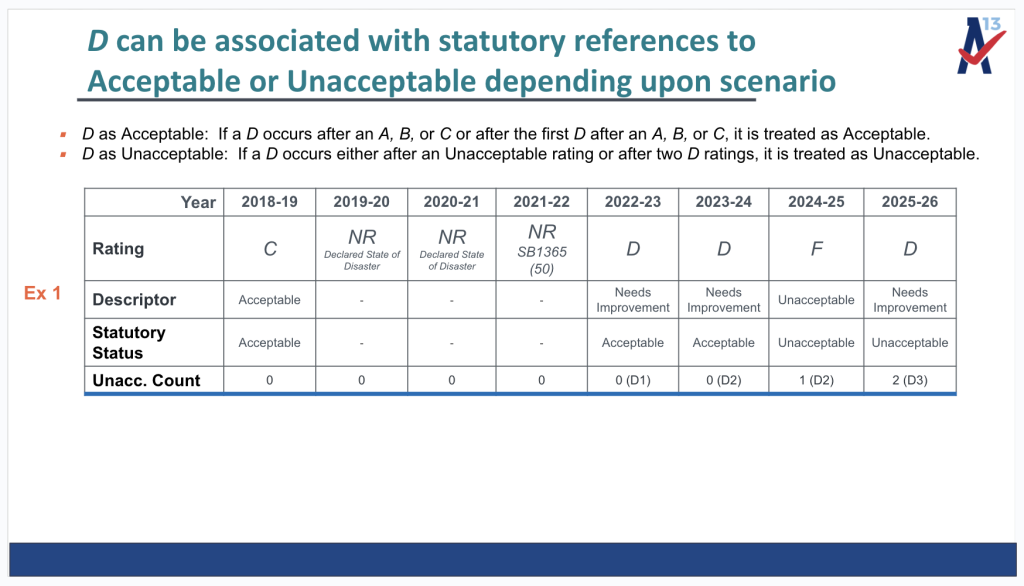When A–F ratings resumed in Texas, a specific accountability term began showing up more often: the Unacceptable Count. Senate Bill 1365, passed during the 87th Texas Legislature, requires the Texas Education Agency (TEA) to track and report the number of consecutive years a campus has received an unacceptable overall rating. While this requirement became law in 2021, its impact is now more visible with the return of our state accountability ratings. In this article, we’ll take a closer look at tracking the Unacceptable Count, what SB 1365 requires, and why it matters to your district.
What is the Unacceptable Count?
The Unacceptable Count reflects how many consecutive years a campus has received an unacceptable overall rating (typically a D or F, depending on context). This count is not just informational; it plays a role in determining when TEA interventions are required. The Unacceptable Count will be displayed on accountability reports and should be used to help make local decisions.
What Affects the Count?
Several factors influence whether a campus’s Unacceptable Count increases, resets, or holds:
- A rating of A, B, or C resets the count to zero.
- An F rating always increases the count.
- A D rating may increase the count, depending on where it lands.
- Not Rated holds the count; it neither resets nor increases it.

Whether a D rating increases the count depends on where it lands.
Understanding the Unacceptable Count is essential for campus and district leaders trying to assess the long-term implications of year-to-year ratings. Campuses may have years where accountability ratings are paused or move from year to year due to changing circumstances. However, what ultimately matters is the buildup of consecutive years with unacceptable ratings.
Why the Count Matters
When a campus reaches an Unacceptable Count of five, TEA may take serious action. This includes campus closure or the appointment of a board of managers to replace the district’s school board.
These aren’t automatic consequences, but the count reaching five places the campus in a high-risk category where TEA is required by law to take significant steps. That’s why it’s important to know not just your most recent rating, but also track your campus and district historical accountability ratings.
This is about more than one year’s performance. It reflects patterns over time, and SB 1365 requires those patterns to be officially tracked and reported.
Watch the Video
To see how these rules play out in accountability examples, including multi-year timelines and how D ratings are treated based on where they land, watch our latest, full-length video.
Takeaways for Campus and District Leaders
- Review your campus’s accountability history back to 2014.
- Understand that Not Rated years pause the count—they don’t reset it.
- Know that a pattern of D ratings can be just as risky as an F.
Conclusion
If you have questions about how SB 1365 and the Unacceptable Count impact your campus or district, reach out to ESC Region 13. We can help you understand your data, determine your best course of action, and even create custom timelines to help visualize your accountability history.
Visit our website for the latest professional development opportunities, resources, or to subscribe to our weekly newsletter. This is the best way to stay informed of current updates and changes. We’re always here to help!
Melinda Marquez is the Director of Accountability, Assessment, and Leadership Systems here at ESC Region 13.






Add comment